Optimized Design of Neural Networks for a River Water Level Prediction System
Abstract
1. Introduction
2. Materials and Methods
2.1. Radial Basis Function Neural Networks
2.2. RBF NN Design Using Multi-Objective Genetic Algorithms
2.2.1. Overview
2.2.2. Procedures and Operators
2.2.3. Model Design Cycle
2.3. Source of Data
3. Results and Discussion
3.1. First Experiment
- previous 12 h sampled every 10 min (as the original data);
- past 6 h sampled at every 20 min;
- past 6 h sampled at every 30 min;
- past 6 days sampled at every hour.
- population size: 100;
- proportion of random immigrants: 10%;
- selective pressure: 2;
- crossover rate: 0.7;
- survival rate: 0.5
3.2. Second Experiment
- previous 4 h sampled every 10 min (as the original data);
- past 6 h sampled at every 20 min;
- past 8 h sampled at every 30 min;
- past 12 h sampled at every hour;
- past 18 h sampled at every two hours;
- past 5 days sampled at every six hours.
4. Conclusions
Author Contributions
Funding
Institutional Review Board Statement
Informed Consent Statement
Data Availability Statement
Conflicts of Interest
References
- Lindenmayer, D.B.; Likens, G.E. Adaptive monitoring: A new paradigm for long-term research and monitoring. Trends Ecol. Evol. 2009, 24, 482–486. [Google Scholar] [CrossRef]
- Tsujikura, H.; Tanaka, K.; Tachikawa, Y. Development of a Water Surface Level Prediction Method Affected by River Mouth Sandbar Collapse. Procedia Eng. 2016, 154, 1349–1358. [Google Scholar] [CrossRef][Green Version]
- Choi, C.; Kim, J.; Han, H.; Han, D.; Kim, H.S. Development of Water Level Prediction Models Using Machine Learning in Wetlands: A Case Study of Upo Wetland in South Korea. Water 2019, 12, 93. [Google Scholar] [CrossRef]
- Lejeune, O. Using Machine Learning to Predict Rhine Water Levels. Available online: https://towardsdatascience.com/using-machine-learning-to-predict-rhine-water-levels-44afce697074 (accessed on 1 September 2021).
- Fujitsu Blog. Predicting River Water Levels with AI, 22 January 2020. Available online: https://blog.global.fujitsu.com/fgb/2020-01-22/pre (accessed on 1 September 2021).
- Young, C.-C.; Liu, W.-C.; Hsieh, W.-L. Predicting the Water Level Fluctuation in an Alpine Lake Using Physically Based, Artificial Neural Network, and Time Series Forecasting Models. Math. Probl. Eng. 2015, 2015, 708204. [Google Scholar] [CrossRef]
- Hettiarachchi, N.; Thilakumara, R.P. Water level forecasting and flood warning system: A Neuro-Fuzzy Approach. Int. J. Appl. Eng. Res. 2014, 9, 4901–4904. [Google Scholar]
- Nguyen, T.-T.; Huu, Q.N.; Li, M.J. Forecasting Time Series Water Levels on Mekong River Using Machine Learning Models. In Proceedings of the 2015 Seventh International Conference on Knowledge and Systems Engineering (KSE), Ho Chi Minh City, Vietnam, 8–10 October 2015; pp. 292–297. [Google Scholar] [CrossRef]
- Castillo, J.M.M.; Cspedes, J.M.S.; Cuchango, H.E.E. Water Level Prediction Using Artificial Neural Network Model. J. Appl. Eng. Res. 2018, 13, 14378–14381. [Google Scholar]
- Assem, H.; Ghariba, S.; Makrai, G.; Johnston, P.; Gill, L.; Pilla, F. Urban Water Flow and Water Level Prediction Based on Deep Learning. Lect. Notes Comput. Sci. 2017, 10536, 317–329. [Google Scholar] [CrossRef]
- Kaloop, M.R.; El-Diasty, M.; Hu, J.W. Real-time prediction of water level change using adaptive neuro-fuzzy inference system. Geomatics, Nat. Hazards Risk 2017, 8, 1320–1332. [Google Scholar] [CrossRef]
- Luna, A.; Lineros, M.; Gualda, J.; Cervera, J.G.; Luna, J.M. Assessing the best gap-filling technique for river stage data suitable for low capacity processors and real-time application using IoT. Sensors 2020, 20, 6354. [Google Scholar] [CrossRef] [PubMed]
- ASCE Task Committee on Application of Artificial Neural Networks in Hydrology Artificial Neural Networks in Hydrology. II: Hydrologic Applications. J. Hydrol. Eng. 2000, 5, 124–137. [Google Scholar] [CrossRef]
- ASCE Task Committee on Application of Artificial Neural Networks in Hydrology Artificial Neural Networks in Hydrology. I: Preliminary Concepts. J. Hydrol. Eng. 2000, 5, 115–123. [Google Scholar] [CrossRef]
- Maier, H.R.; Dandy, G.C. Neural networks for the prediction and forecasting of water resources variables: A review of modelling issues and applications. Environ. Model. Softw. 2000, 15, 101–124. [Google Scholar] [CrossRef]
- Dawson, C.; Wilby, R.L. Hydrological modelling using artificial neural networks. Prog. Phys. Geogr. Earth Environ. 2001, 25, 80–108. [Google Scholar] [CrossRef]
- Maier, H.R.; Jain, A.; Dandy, G.C.; Sudheer, K. Methods used for the development of neural networks for the prediction of water resource variables in river systems: Current status and future directions. Environ. Model. Softw. 2010, 25, 891–909. [Google Scholar] [CrossRef]
- Nourani, V.; Baghanam, A.H.; Adamowski, J.; Kisi, O. Applications of hybrid wavelet–Artificial Intelligence models in hydrology: A review. J. Hydrol. 2014, 514, 358–377. [Google Scholar] [CrossRef]
- Moody, J.; Darken, C.J. Fast Learning in Networks of Locally-Tuned Processing Units. Neural Comput. 1989, 1, 281–294. [Google Scholar] [CrossRef]
- Levenberg, K. A method for the solution of certain non-linear problems in least squares. Q. Appl. Math. 1944, 2, 164–168. [Google Scholar] [CrossRef]
- Marquardt, D.W. An Algorithm for Least-Squares Estimation of Nonlinear Parameters. J. Soc. Ind. Appl. Math. 1963, 11, 431–441. [Google Scholar] [CrossRef]
- Ruano, A.; Fleming, P.; Jones, D. Connectionist approach to PID autotuning. IEE Proc. D Control. Theory Appl. 1992, 139, 279–285. [Google Scholar] [CrossRef]
- Ferreira, P.; Ruano, A. Exploiting the separability of linear and nonlinear parameters in radial basis function networks. In Proceedings of the IEEE 2000 Adaptive Systems for Signal Processing, Communications and Control Symposium (Cat. No.00EX373), Lake Louise, AB, Canada, 4 October 2002; pp. 321–326. [Google Scholar]
- Ferreira, P.M.; Ruano, A.E. Evolutionary Multiobjective Neural Network Models Identification: Evolving Task-Optimised Models. Stud. Comput. Intell. 2011, 372, 21–53. [Google Scholar] [CrossRef]
- Fonseca, P.; Fleming, C.M. Genetic Algorithms for Multiobjective Optimization: FormulationDiscussion and Generalization. Icga 1993, 93, 416–423. [Google Scholar]
- Fonseca, C.; Fleming, P. Multiobjective optimization and multiple constraint handling with evolutionary algorithms. I. A unified formulation. IEEE Trans. Syst. Man Cybern. Part A Syst. Hum. 1998, 28, 26–37. [Google Scholar] [CrossRef]
- World Meteorological Organization. WMO. Available online: https://www.wmo.int/pages/index_en.html (accessed on 20 October 2020).
- Campolo, M.; Andreussi, P.; Soldati, A. River flood forecasting with a neural network model. Water Resour. Res. 1999, 35, 1191–1197. [Google Scholar] [CrossRef]
- See, L.; Openshaw, S. Applying soft computing approaches to river level forecasting. Hydrol. Sci. J. 1999, 44, 763–778. [Google Scholar] [CrossRef]
- Seo, Y.; Kim, S.; Kisi, O.; Singh, V.P. Daily water level forecasting using wavelet decomposition and artificial intelligence techniques. J. Hydrol. 2015, 520, 224–243. [Google Scholar] [CrossRef]
- Ferreira, P.; Ruano, A.; Silva, S.; Conceição, E. Neural networks based predictive control for thermal comfort and energy savings in public buildings. Energy Build. 2012, 55, 238–251. [Google Scholar] [CrossRef]
- Mestre, G.; Ruano, A.; Duarte, H.; Silva, S.; Khosravani, H.; Pesteh, S.; Ferreira, P.M.; Horta, R. An Intelligent Weather Station. Sensors 2015, 15, 31005–31022. [Google Scholar] [CrossRef]
- Khosravani, H.R.; Castilla, M.D.M.; Berenguel, M.; Ruano, A.E.; Ferreira, P.M. A Comparison of Energy Consumption Prediction Models Based on Neural Networks of a Bioclimatic Building. Energies 2016, 9, 57. [Google Scholar] [CrossRef]
- López-Lineros, M.; Estévez, J.; Giráldez, J.; Madueño, A. A new quality control procedure based on non-linear autoregressive neural network for validating raw river stage data. J. Hydrol. 2014, 510, 103–109. [Google Scholar] [CrossRef]
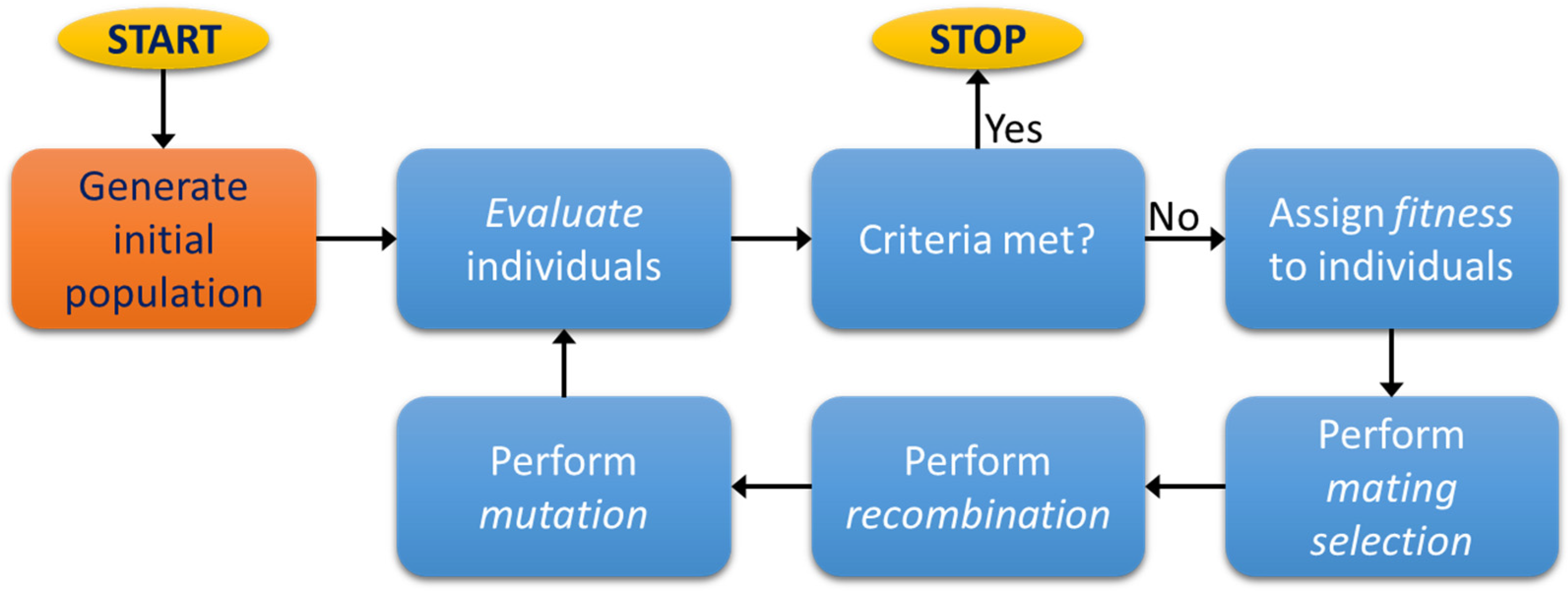
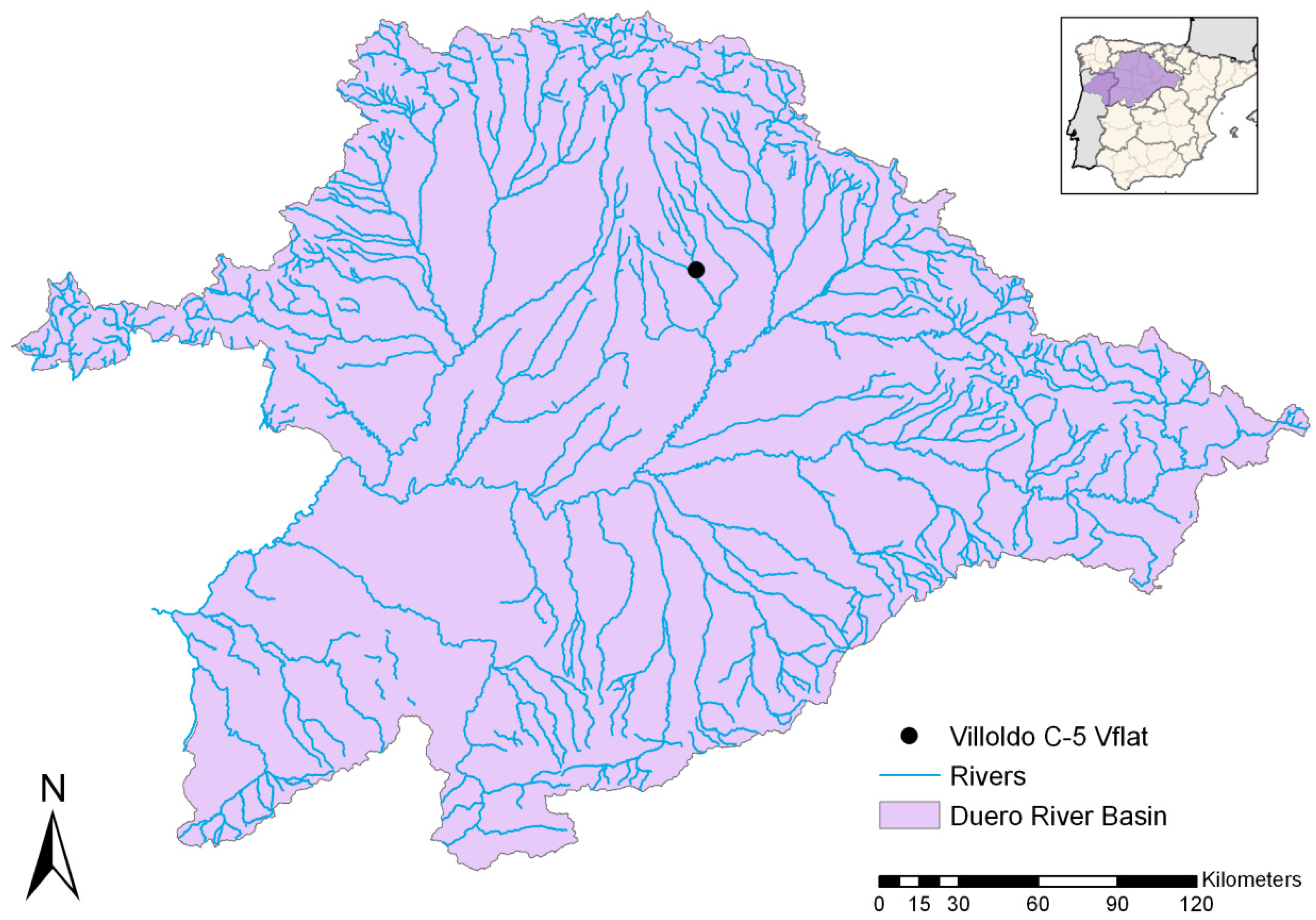


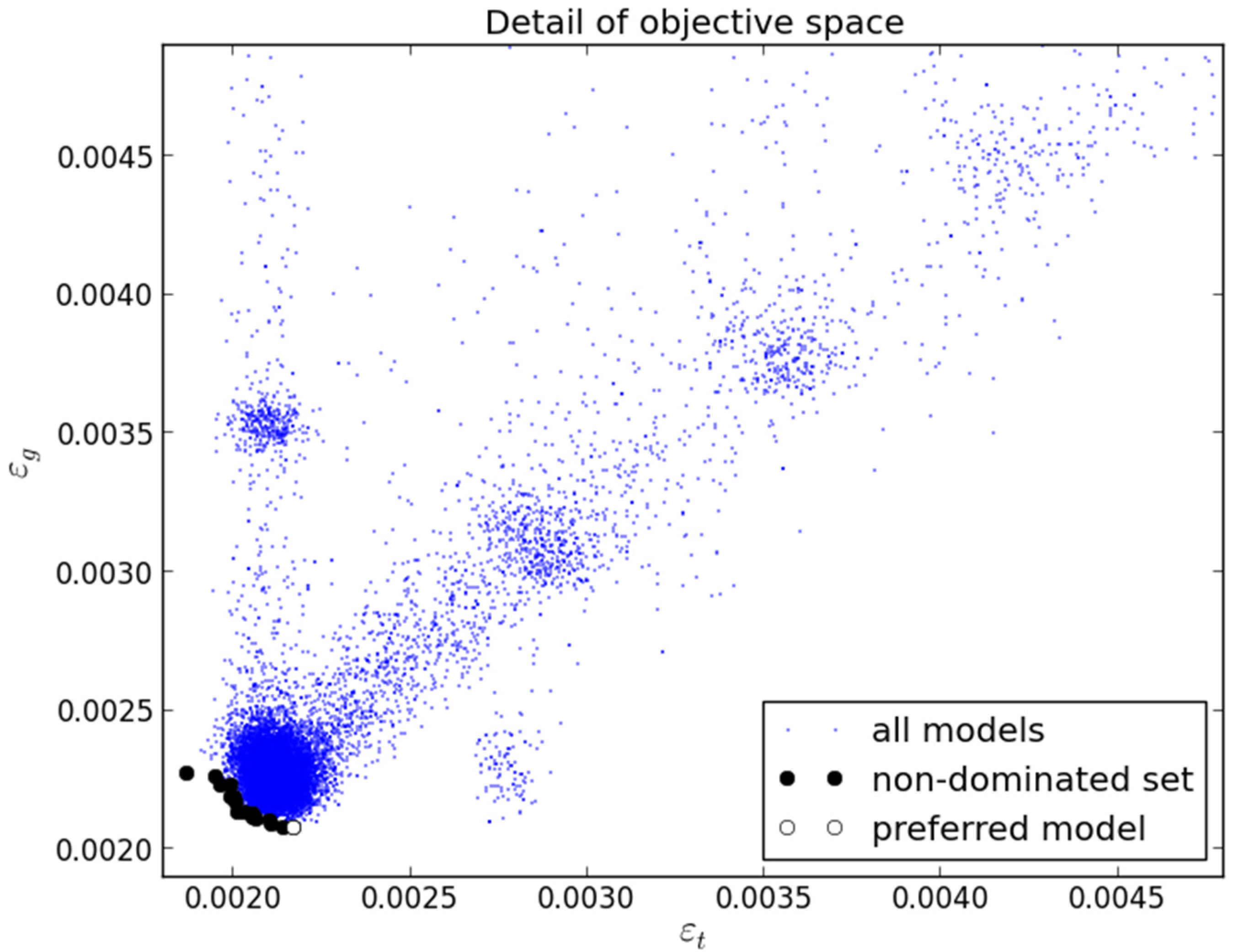
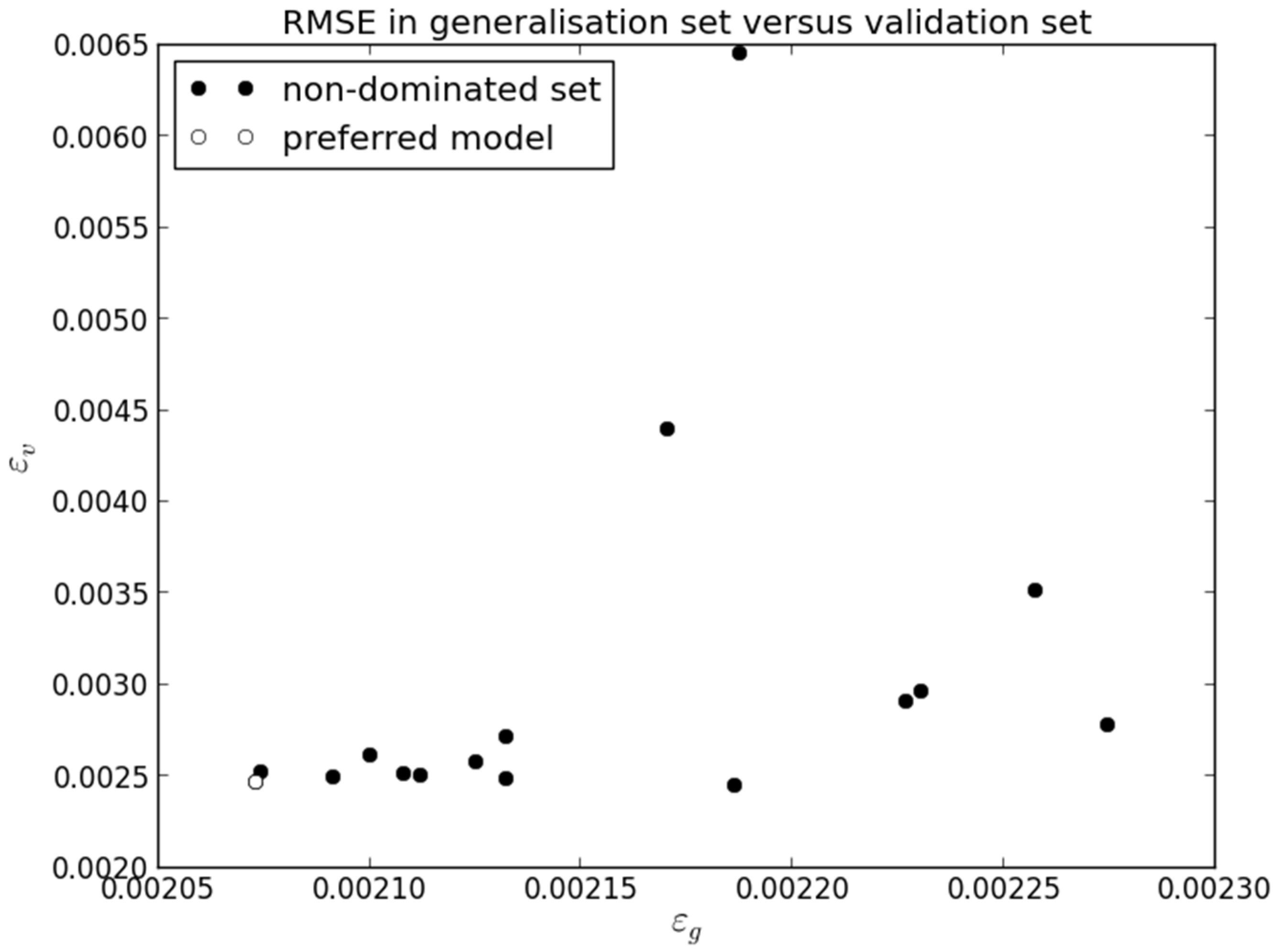
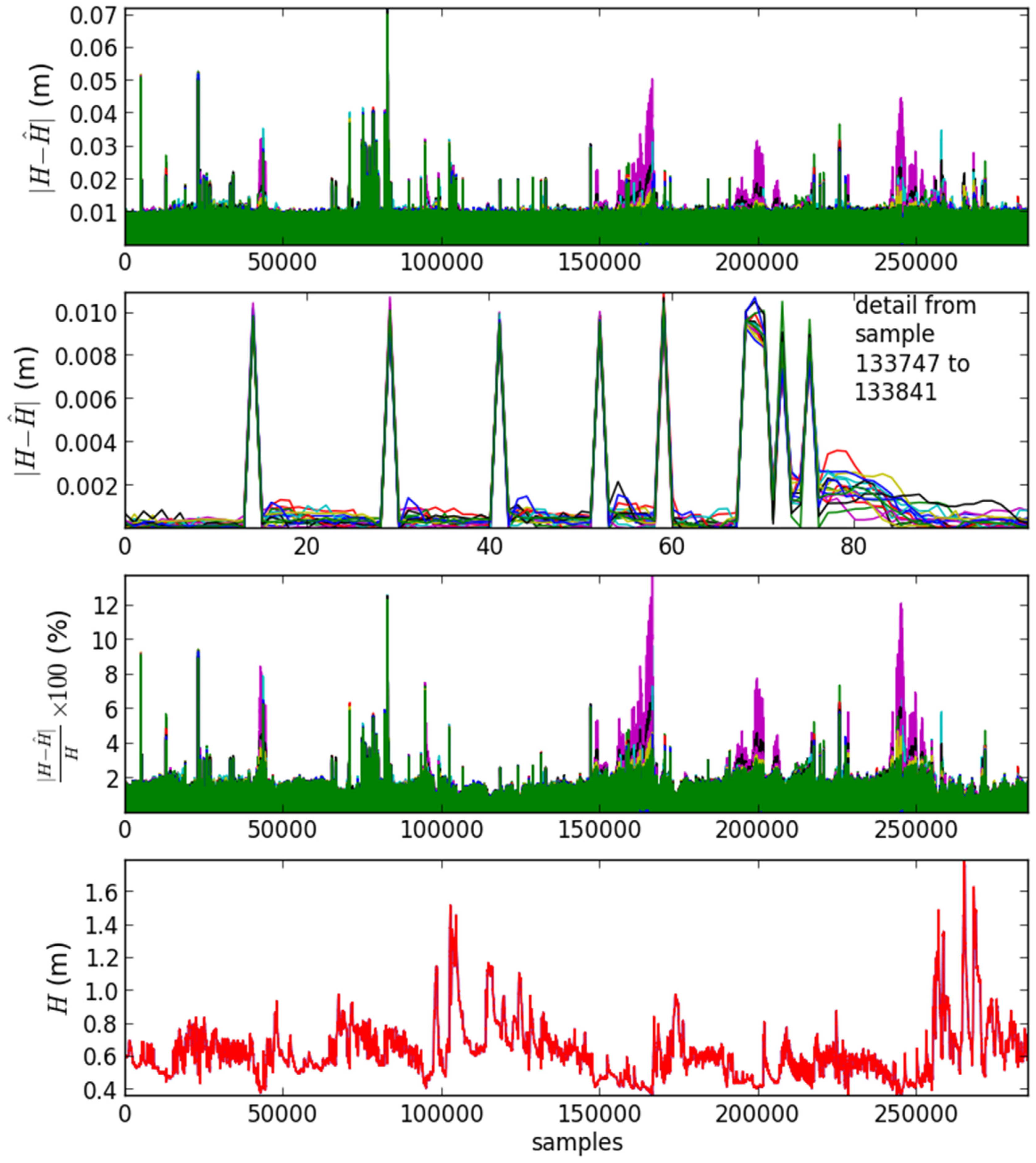
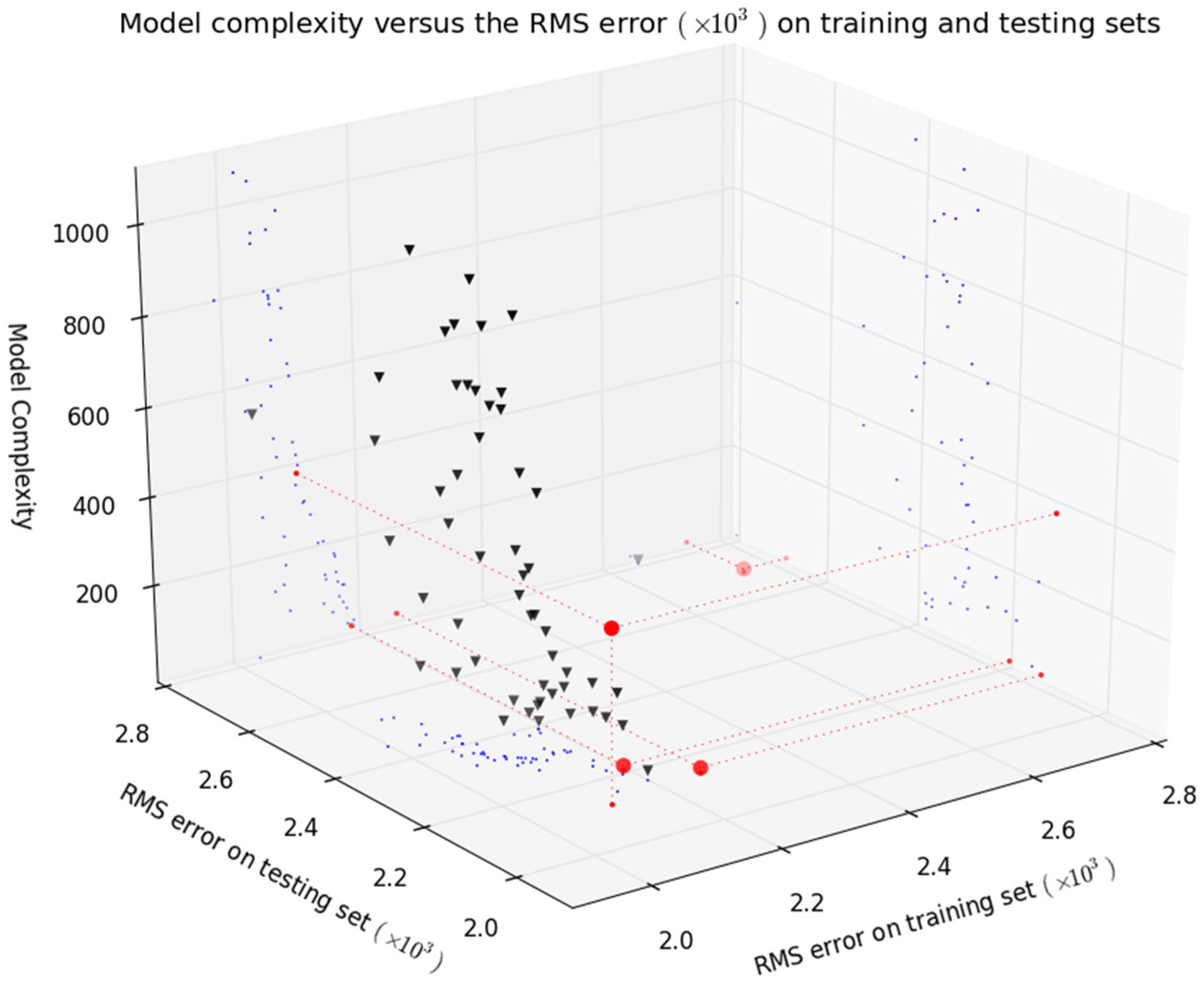

| Minimum | Maximum | |
|---|---|---|
| Number of neurons | 2 | 24 |
| Number of inputs | 2 | 48 |
| Minimum | 0.0019 | 0.0021 |
| Average | 0.0020 | 0.0022 |
| Maximum | 0.0022 | 0.0023 |
| Number of Inputs: | 29 | 31 | 32 | 33 | 34 | 35 | 36 | 38 | 39 | 44 | 46 |
| Neurons: | 1318 | 1321 | 1217 | 11 | 11 | 12 | 11 | 11 | 1123 | 24 | 1619 |
| Minimum | 0.0021 | 0.0021 | 11 |
| Average | 0.0023 | 0.0023 | 110 |
| Maximum | 0.0027 | 0.0027 | 401 |
| Number of Inputs: | 3 | 4 | 5 | 38 |
|---|---|---|---|---|
| Neurons: | 2 | 2 | 2 | 10 |
Publisher’s Note: MDPI stays neutral with regard to jurisdictional claims in published maps and institutional affiliations. |
© 2021 by the authors. Licensee MDPI, Basel, Switzerland. This article is an open access article distributed under the terms and conditions of the Creative Commons Attribution (CC BY) license (https://creativecommons.org/licenses/by/4.0/).
Share and Cite
Lineros, M.L.; Luna, A.M.; Ferreira, P.M.; Ruano, A.E. Optimized Design of Neural Networks for a River Water Level Prediction System. Sensors 2021, 21, 6504. https://doi.org/10.3390/s21196504
Lineros ML, Luna AM, Ferreira PM, Ruano AE. Optimized Design of Neural Networks for a River Water Level Prediction System. Sensors. 2021; 21(19):6504. https://doi.org/10.3390/s21196504
Chicago/Turabian StyleLineros, Miriam López, Antonio Madueño Luna, Pedro M. Ferreira, and Antonio E. Ruano. 2021. "Optimized Design of Neural Networks for a River Water Level Prediction System" Sensors 21, no. 19: 6504. https://doi.org/10.3390/s21196504
APA StyleLineros, M. L., Luna, A. M., Ferreira, P. M., & Ruano, A. E. (2021). Optimized Design of Neural Networks for a River Water Level Prediction System. Sensors, 21(19), 6504. https://doi.org/10.3390/s21196504









